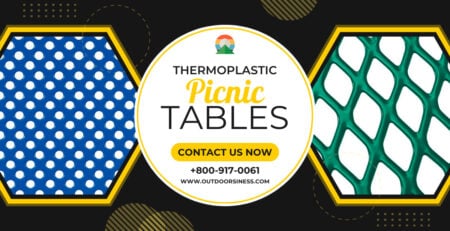
If you’ve ever seen a playground, a picnic table at a park, or even a bench at school, there’s a good chance it had a thick, bumpy coating on it. That stuff? It’s called textured polyethylene coating. It’s used to protect outdoor furniture and equipment from sun, rain, rust, and just plain wear and tear.
But what happens when it gets damaged? Maybe someone dragged a sharp object across it, or the weather finally wore it down. Don’t worry—it can be repaired. And you don’t need to be a pro to understand how. Here’s a step-by-step guide that breaks it down.
🧠 First, What Is Textured Polyethylene?
Polyethylene is a type of plastic. When it’s used as a coating, it’s melted and sprayed or dipped onto metal surfaces to make them tougher and weatherproof. The “textured” part just means it’s not smooth—it has a rough, grippy feel to it, like the surface of a basketball.
🔍 Step 1: Inspect the Damage
Before you jump into repairs, take a good look at the damaged area.
-
Small cracks or chips? These are easy to patch.
-
Big flakes peeling off? You might need to do a bit more work.
-
Rusty metal showing through? That needs to be cleaned up before anything else.
🧽 Step 2: Clean the Area
Use soap and water to scrub the damaged area clean. If there’s any rust showing through, use sandpaper or a wire brush to remove it completely. The coating won’t stick well if there’s rust or dirt in the way.
Pro Tip: Wear gloves and safety glasses when sanding metal. Nobody wants a piece of rust in their eye.
🔥 Step 3: Heat the Edges (If Needed)
For small splits or chips, sometimes just heating the edges of the polyethylene with a heat gun (not a hair dryer—those don’t get hot enough) can help it re-seal. Carefully heat the area and press the softened plastic back together with a putty knife.
But be careful! Too much heat can cause more damage. Work slowly and don’t melt it into a puddle.
🧰 Step 4: Apply Polyethylene Repair Material
You can buy polyethylene repair kits online. They come with color-matching repair sticks or powder that you melt onto the damaged spot.
Here’s how to do it:
-
Heat the repair stick with the heat gun until it starts to melt.
-
Drip or spread it into the damaged spot like you’re using a crayon on hot pavement.
-
Smooth it out with a metal scraper or putty knife.
-
Let it cool and harden.
If you’re using powdered polyethylene, sprinkle it over the area and use the heat gun to melt it into place.
🧊 Step 5: Let It Cool & Check It
Once the area is fully cooled (usually in 10-20 minutes), tap it lightly to make sure it’s solid. If it still feels soft or uneven, you can reheat and apply a little more.
✅ You’re Done!
That’s it! Your coated surface is good as new—or at least protected from getting worse.
Just remember: polyethylene coating is super tough, but not invincible. Doing small repairs early can keep benches, tables, and equipment looking great for years.
Final Thoughts
Even though it sounds fancy, fixing textured polyethylene coating is something anyone can learn with a little patience and the right tools. Think of it like fixing a scratch on your favorite sneakers or patching up a skateboard deck—it’s all about making things last.
Got any park benches, picnic tables, or playground parts that need love? Grab your repair kit and get to it!







